Information provided by Bryan Cogdell.
Original post first published on www.meade.com.
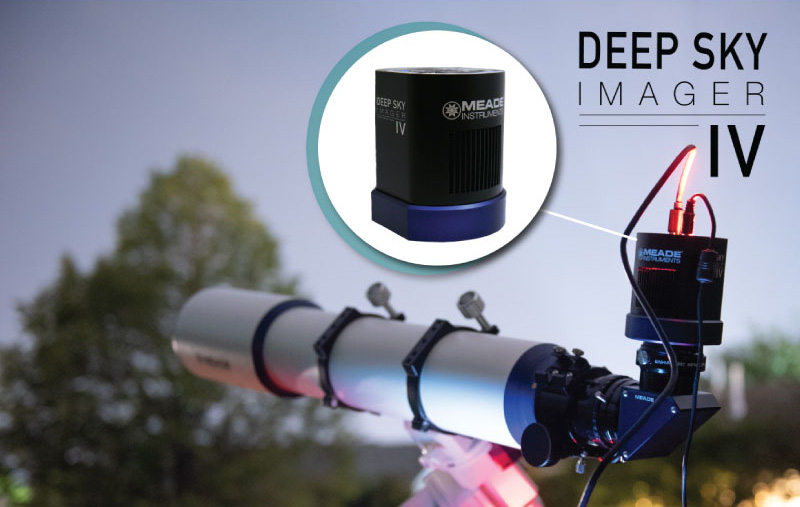
Meade Deep Sky Imager IV (DSI-IV) on Meade Series 6000 APO.
The acclaimed DSI camera series is back, and its more advanced than ever. Equipped with a 16MP Panasonic CMOS image sensor, regulated two-stage thermo-electric cooler, and
3.8μm pixels, the new DSI-IV is the ideal camera for all your astrophotography pursuits. The low-noise, high-resolution and fast USB 3.0 readout make this camera suitable for both deep-sky and planetary imaging, making it one of the most versatile astronomy cameras available.

Meade Deep Sky Imager IV (DSI-IV) package.
Meade’s DSI-IV has been a long-awaited product. This 16MP camera was designed to enhance your astrophotography experience like never before. The regulated two-stage thermo-electric cooler greatly reduces thermal noise, allowing you to take great long exposure astro-images of galaxies, nebulae, star clusters and more with your telescope. The thermo-electric cooler also keeps control of camera temperature so you can reuse your calibration images night after night. The combination of an on-board fan and thermo-electric coolers helps regulate temperature up to 40-50°C below ambient.
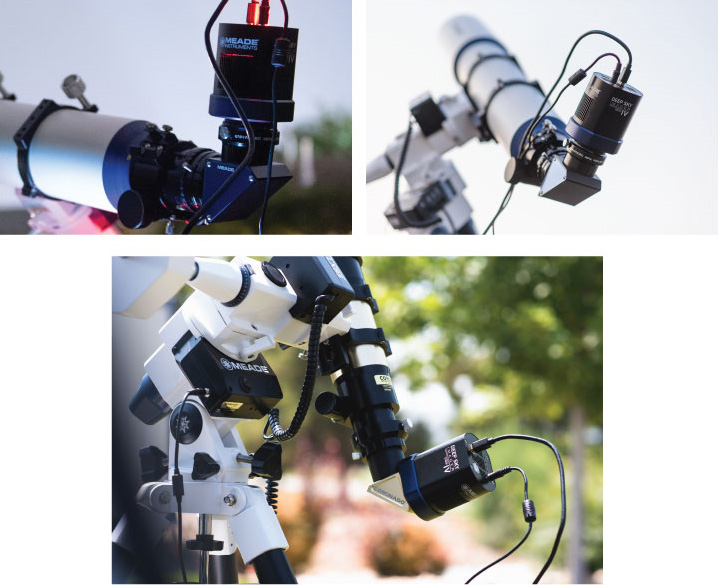
Meade Deep Sky Imager IV (DSI-IV).
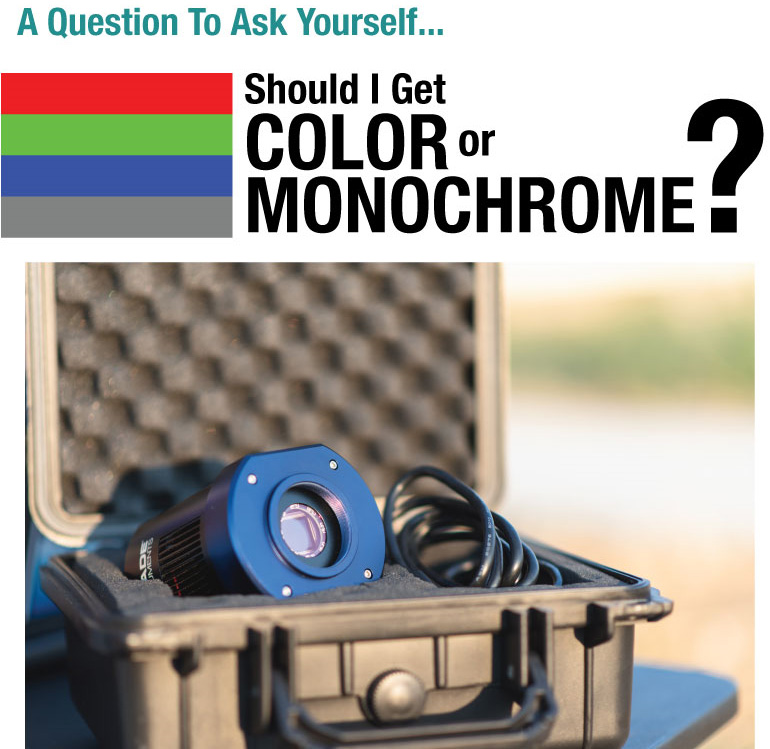
Meade Deep Sky Imager IV (DSI-IV).
Colour
The DSI-IV Colour is referred to as a “one-shot colour” camera; meaning you get colour directly from the camera in a single image without any special processing of filters. There are actual colour dyes on every pixel of the camera, usually in a matrix of red, green, and blue. This is how other cameras, such as the one on your phone, obtains colour as well. One shot colour cameras are very convenient because you get instant colour. In situations where you need to capture as quickly as possible, like an eclipse, a comet, or an ISS flyover, the DSI-IV Colour is very useful.
Pros & Cons
The colour version is easier to start with and costs less, plus you do not have to purchase as many accessories as you would with the monochrome model. Colour is generally recommended to a beginner, or to an imager that wants an all-purpose camera. The trade-off is because you are always shooting through the colour dyes over each pixel, you are missing some of the potential sensitivity the sensor would otherwise have, especially in certain parts of the visual spectrum. As a result, the colour version is not as sensitive as the monochrome model.
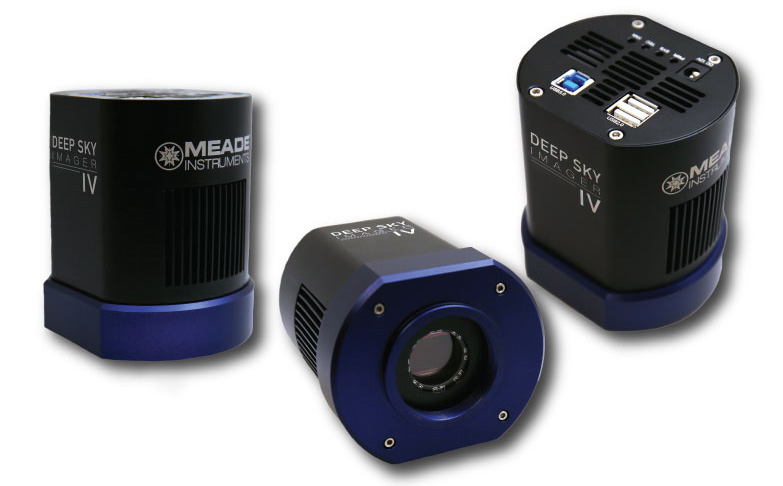
Meade Deep Sky Imager IV (DSI-IV).
Monochrome
The DSI-IV Monochrome camera uses the full potential of its CMOS imaging sensor. It is more sensitive than the colour model overall. For deep sky astrophotography, monochrome gives you the edge on imaging very faint detail from nebulae and galaxies. It’s also better suited for Solar Hydrogen-Alpha imaging through a cope such as the Coronado P.S.T and SolarMax series. A colour camera would really limit the amount of light the camera could see in H-Alpha and most of its sensitivity would go unused. But a monochrome camera is ideal for that. And think about it, H-Alpha is only a single colour anyways! Solar imagers simply designate their black and white image as a red image (there are more sophisticated ways to get multi-tone colour but this is the idea)!
Pros & Cons
The DSI-IV Monochrome gets colour images by photographing through a series of colour filters, usually red, green and blue. So to get a single colour image, you have to capture at least 3 times as many exposures! This can also be combined with a “clear” luminance filter which passes as much broad-spectrum light to the sensor as possible. It’s usually better to use the filters in a filter wheel, and these accessories add to the cost of your imaging setup. Switching filters is also time consuming (even if motorised) and therefore not suited for quick action things like an ISS pass or an eclipse. Also, more image processing is required for monochrome cameras since you have to manage and combine all of the different filtered images to obtain a single processed image.
With the use of filters, you have more flexibility. You can do more in light polluted cities with specialised filters. One of the more popular techniques with monochrome cameras is narrowband imaging though specialised narrowband filters. These filters block all but a small portion of the spectrum that only nebulae emit, such as Hydrogen-Alpha and Oxygen-III. These filters are expensive, too, and add to the overall setup cost.
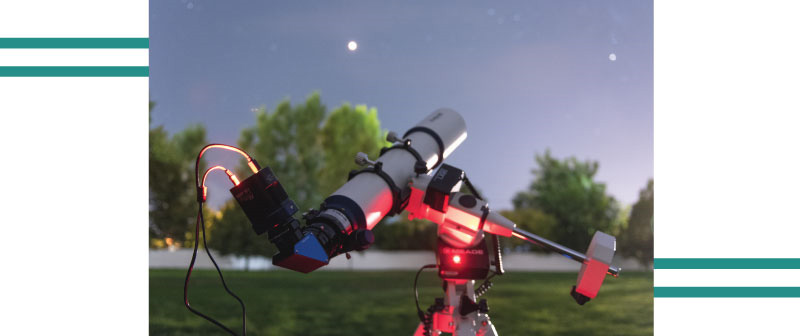
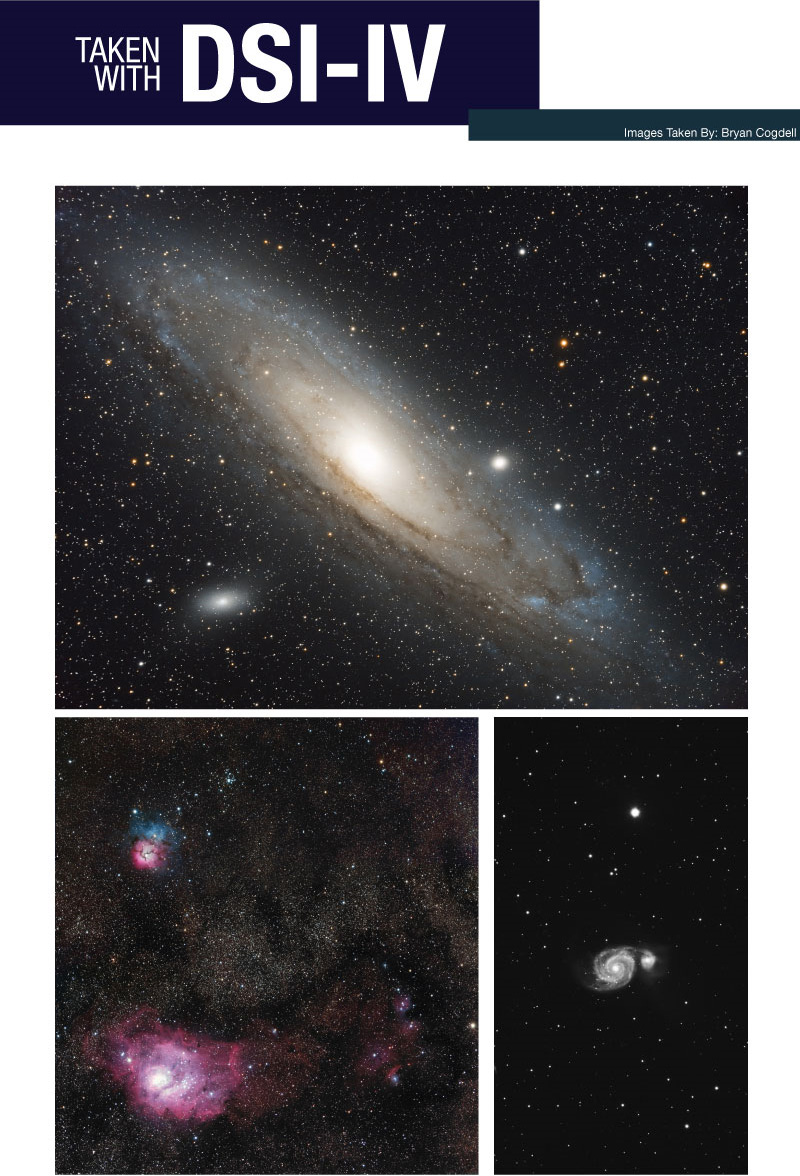
Images captured with the Meade Deep Sky Imager IV (DSI-IV).
The DSI-IV offers immense value beyond the camera itself. It not only comes with its own high-quality, weather-resistant hard carrying case and AC power adapter, but it also comes with a new version of SkyCapture camera control software. With complete camera control for all major operating systems including Windows, Mac OS X and Linux, SkyCapture can run automatic image capture sequences without the need to purchase additional software. Capture high-quality images and video of galaxies, nebulae, and other beautiful objects of the night sky with Meade’s DSI-IV.
Related topics:
article, DSI-IV, camera







